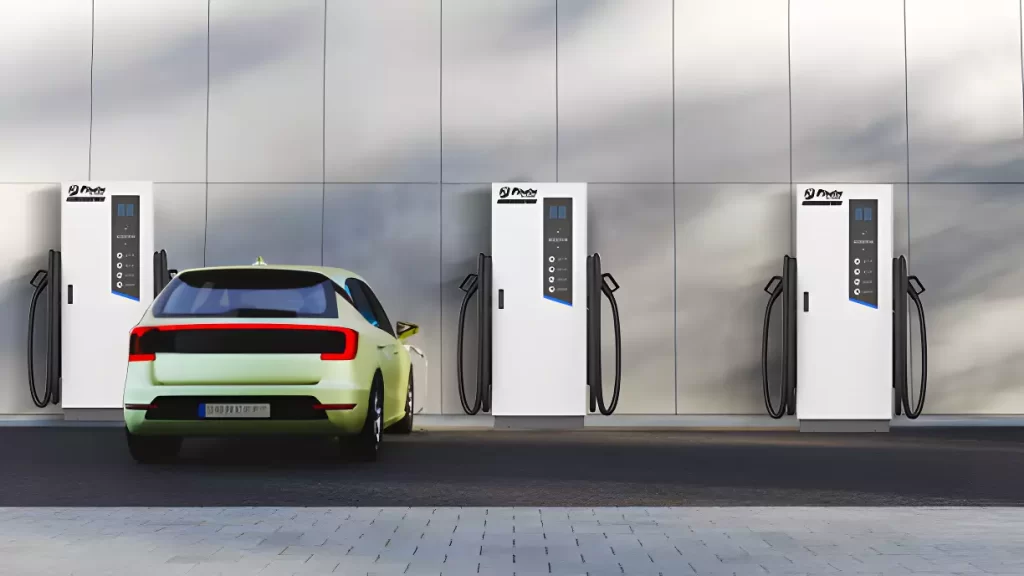
Products
Fast, Reliable, Everywhere

Solutions
Efficient, Innovative EV Charging Solutions.
When discussing electric vehicles or other electronics, the terms AC and DC frequently charge surfaces, making it essential to understand the fundamental distinctions between them.
AC and DC represent Alternating Current and Direct Current, each presenting unique characteristics and functionalities. Despite both methods of delivering electrical power, their applications, efficiency, and impact on electronic devices and electric vehicles significantly differ.

Through this analysis, we'll delve into the nuances between AC and DC charging to provide a thorough understanding of their differences and respective advantages.
An AC (Alternating Current) EV (Electric Vehicle) charger, also known as a Level 1 or Level 2 charger, is a device that utilizes household or commercial electrical currents to charge an electric vehicle.
It converts the AC from the grid into DC (Direct Current) inside the vehicle's onboard charger, storing it in the battery. Here are some pros and cons of AC EV chargers:
I have another article on what is an AC EV charger; in this article, I describe it in detail.
A DC (Direct Current) EV (Electric Vehicle) charger, often called a fast charger or Level 3 charger, is a charging system that delivers direct current straight to the vehicle's battery.
Unlike AC chargers, which rely on the vehicle's onboard charger to convert AC into DC, DC chargers bypass this step, resulting in significantly faster charging times. Let's explore some of the advantages and disadvantages of DC EV chargers.
Click here to learn more about DC EV chargers.
AC and DC EV chargers serve the fundamental purpose of charging an electric vehicle but differ in how they deliver charge, the charging speed, cost, and infrastructure requirements. Here is a detailed comparison:
On the other hand, DC chargers are often called "fast chargers" because they can charge an EV battery to around 80% in just 20 to 30 minutes.
Indeed, let's delve into some specific scenarios and uses to understand the best applications of AC and DC chargers.
Both ways have pros and cons, depending on your choice. This article can help you understand the difference between the two and make the right purchase decision. Contact our experts in time for an inquiry.
Services Piwin can provide include:
1. Free Consultation
2. Ultra-low DC and AC EV charger price
3. One-stop service
4. Technical Guidance
5. After-sales service
6. Perfect customized solution
F: Does DC charge faster than AC?
Q: Regarding electric vehicle charging, DC (direct current) charging is typically faster than AC (alternating current) charging.
F: Is Tesla AC or DC charging?
Q: Tesla electric vehicles can use both AC (Alternating Current) and DC (Direct Current) charging. Household outlets or Tesla Wall Connectors provide AC power converted to DC by the onboard charger. Tesla Superchargers provide DC power for faster charging. Compatibility with charging infrastructure can vary by Tesla model, and adapters may sometimes be needed.
F: Can I have a DC EV charger installed at home?
Q: Yes, it is possible to install a DC fast charger, often called a Level 3 charger, at home.
However, several considerations, such as infrastructure requirements, cost, charge rate, and battery health, may make it less feasible for most residential situations. DC fast chargers are most commonly installed in commercial or public settings with a higher demand for quick charging.
Most EV owners charge at home using Level 2 chargers, which offer a good balance between charging Speed and cost and are typically more than sufficient for overnight charging.
